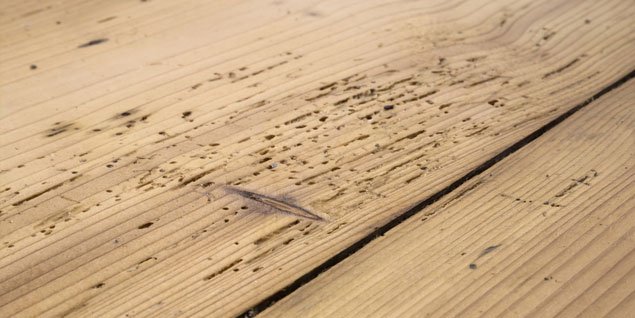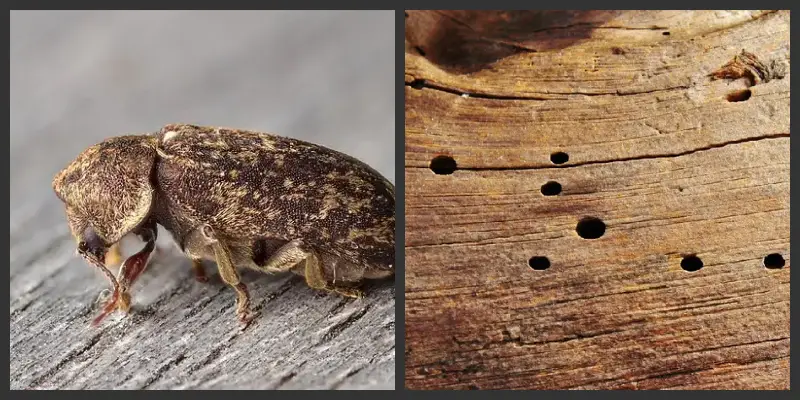Woodworms are one of the most common but destructive pests found in homes, especially when it comes to damaging wooden furniture, beams, and floors. These tiny insects might seem harmless at first, but if left untreated, they can cause significant structural damage to your home. This article will guide you through understanding woodworms, recognizing the signs of an infestation, and the best methods to prevent and treat these pests. For expert solutions on treating woodworms, check out Woodworms.
What Are Woodworms?
Woodworms are the larvae of wood-boring beetles, which feed on wood. They are not actually worms, but the larvae of beetles like the common powder post beetle. These larvae burrow deep into wooden surfaces, where they feed and grow, causing the wood to weaken over time. The damage usually starts from within, making it difficult to spot until the problem has become serious.
The adult beetles lay their eggs in cracks or crevices on the surface of wood, and once the larvae hatch, they begin their destructive feeding process. Although woodworms typically target older, untreated wood, they can also infest newer homes if conditions are damp or the wood is left untreated.
Signs of a Woodworm Infestation
Detecting woodworms early is essential to preventing severe damage. Here are some common signs of a woodworm infestation:
-
Tiny Exit Holes: These are round holes left behind when adult beetles exit the wood after completing their larval stage. They are often about 1-2mm in diameter.
-
Powdery Dust or Frass: As the larvae feed on the wood, they expel a fine dust or frass. This material can often be found around the exit holes.
-
Damaged Wood: Over time, woodworms weaken the wood, causing it to become soft and brittle. In some cases, wood may begin to crumble or break apart.
-
Adult Beetles: In the warmer months, you may spot adult beetles. They are often small, brown or black, and can be seen flying near the wood.
Why Woodworms Are a Problem
Woodworms are a serious concern for homeowners because of the long-term damage they cause. As the larvae burrow into wooden beams, floors, and furniture, the wood gradually loses its strength and stability. If left unchecked, this can lead to structural weaknesses, especially in areas like load-bearing beams or floors.
The damage from woodworms may be hidden within the wood, making it difficult to detect until it has already compromised the wood’s integrity. Over time, the infestation can spread across various parts of the house, causing even more damage.
Preventing Woodworm Infestations
The best way to deal with woodworms is to prevent them from infesting your home in the first place. Here are some effective strategies to keep woodworms at bay:
-
Ensure Proper Ventilation: Woodworms thrive in damp, poorly ventilated areas. Keep your home well-ventilated, especially in basements, attics, and crawl spaces. Using dehumidifiers can help reduce the moisture levels in these areas.
-
Treat Wooden Surfaces: If you’re installing new wood or replacing old wooden furniture, treat it with a wood preservative to prevent future infestations.
-
Regular Inspections: Check wooden structures in your home for signs of woodworm damage, especially if your property is older. Early detection can help prevent further damage.
Treating Woodworms: What Are Your Options?
If you have already discovered a woodworm infestation, there are several ways to treat the problem:
-
Chemical Treatments: Chemical insecticides are the most common method for treating woodworms. These chemicals penetrate the wood and kill the larvae, preventing them from emerging as adults.
-
Fumigation: For large infestations, fumigation may be necessary. This involves sealing off the affected area and releasing a gas that kills the larvae and beetles.
-
Boric Acid: Boric acid is a natural, less toxic alternative to chemical treatments. It is an effective way to kill woodworm larvae and is safer for homes with pets or children.
-
Professional Pest Control: If the infestation is too severe or widespread, it is best to call a professional pest control service. Experts can identify the extent of the damage and use appropriate methods to eliminate the infestation.
Repairing the Damage Caused by Woodworms
After you have successfully treated the infestation, you’ll need to repair the damage caused by the woodworms. For small holes, you can use wood fillers to restore the wood’s appearance. For more extensive damage, the affected wood may need to be replaced entirely, especially if it has compromised the structure of your home.
It’s important to address the damage as soon as possible to ensure the safety of your home. If the infestation has affected critical areas like load-bearing beams, it’s best to consult with a professional contractor or carpenter.
Conclusion
Woodworms may be small, but they can cause significant damage to your home if left untreated. Early detection and preventative measures are key to keeping your home safe from these pests. If you find that your home is already infested with woodworms, there are several effective treatments available to eliminate the problem. For more information on how to protect your home from woodworms, visit Woodworms, your trusted source for pest control solutions.






